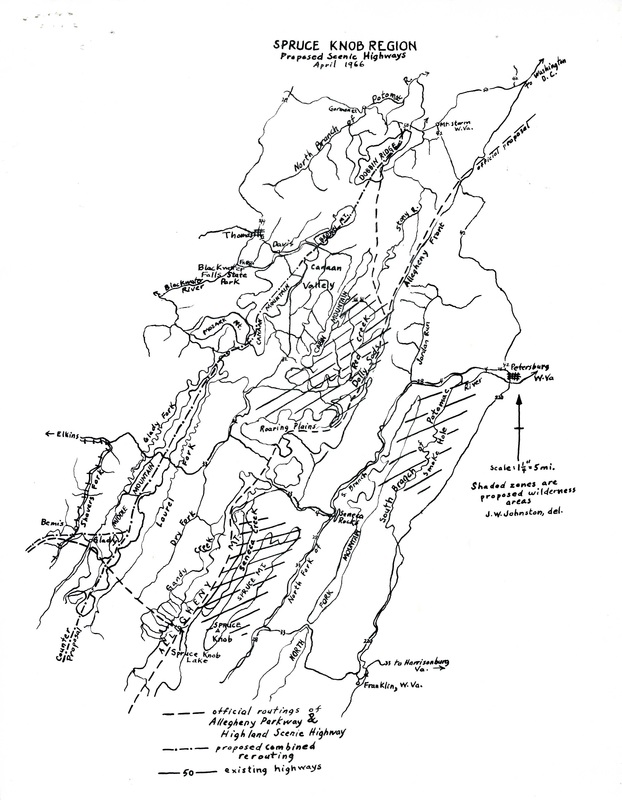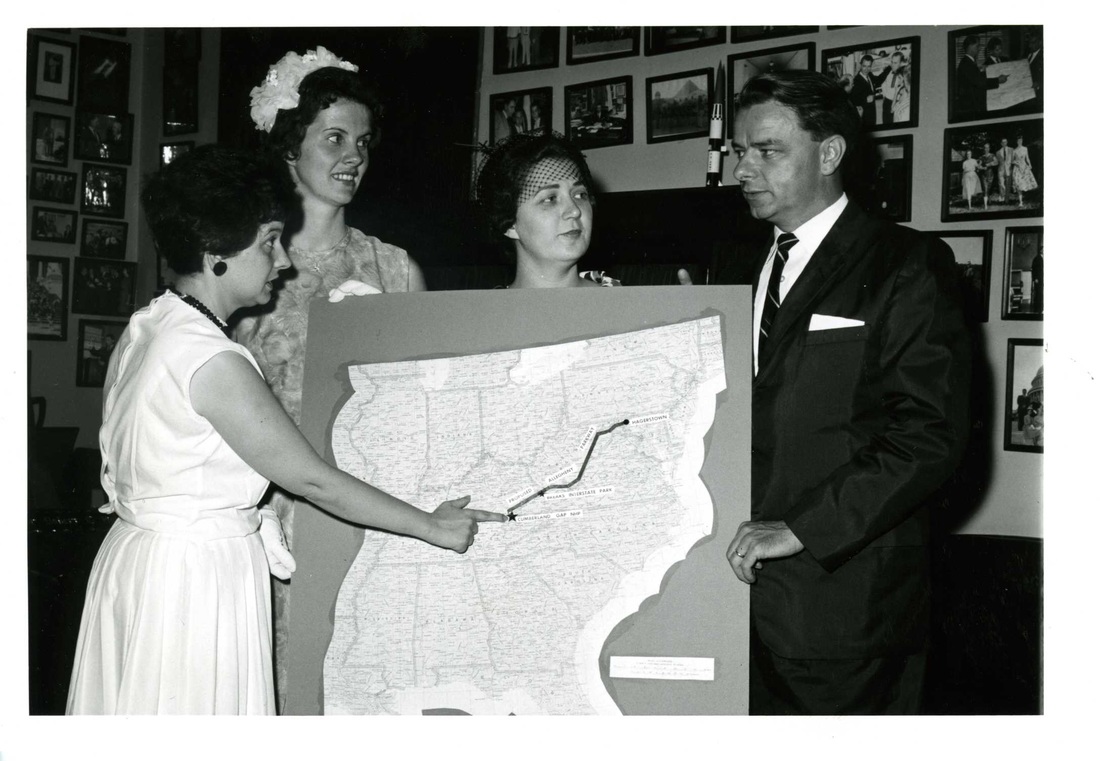The Appalachian Redevelopment Act, cosponsored by Senator Byrd was passed by the Senate on February 1, 1965. The House of Representatives passed the bill on March 3, 1965 and it was signed by President Johnson on March 9, 1965. With the new Appalachian Regional Commission, created by the act, receiving appropriations from Congress to fund infrastructure improvements in the Appalachian states, there was new hope that Senator Byrd’s parkway bill might move forward. In the spring of 1964, the Department of the Interior had completed a study of the project and endorsed the plan. However, progress was soon halted when the Bureau of the Budget refused to include the project in its plans and asked that the Allegheny Parkway be considered along with a dozen other similar projects currently being debated in the Senate. Now in 1965, a new committee, the President’s Recreation Advisory Council was studying the feasibility of the parkway as part of a national scenic roads and parkways program. At the end of the first session of the 89th Congress, Senator Byrd wrote to President Johnson urging his approval of the completed study. While the study was still underway, the Senate passed the Highway Beautification Act on September 16, 1965 which limited the impact of advertising on highways. Following the passage of the Highway Beautification Act, two additional bills for establishing the parkway were put forth in the 90th and 91st Congress, but budgetary disputes kept the bills from ever leaving committee. Other elements of Johnson’s Great Society and the escalation of the Vietnam War shifted the focus of Congress away from the scenic highways program. After nearly a decade pushing for its passage, Senator Byrd abandoned the Allegheny Parkway and began developing the Appalachian Corridor Highway System, which ultimately followed some of the intended route of the parkway. Even Senator Jennings Randolph’s proposed Highland Scenic Parkway (later Highway), which was approved in 1965 was only partially built, with construction of just a fraction of the originally intended route ending in 1981.
With the experience gained from his fight for the Allegheny Parkway in the 1960s, Senator Byrd sharpened his tactics for navigating the long and difficult process of securing passage for major infrastructure projects. By the end of his tenure in office, Senator Byrd achieved Federal support for hundreds of miles of modern highways and freeways in West Virginia, connecting the state’s remote regions to the Interstate Highway System and opening many communities to economic opportunities that had long been unobtainable. Comments are closed.
|
Welcome to the Byrd Center Blog! We share content here including research from our archival collections, articles from our director, and information on upcoming events.
Categories
All
Archives
July 2023
|
Our Mission: |
The Byrd Center advances representative democracy by promoting a better understanding of the United States Congress and the Constitution through programs and research that engage citizens.
|
Copyright © Robert C. Byrd Center for Congressional History and Education
|



 RSS Feed
RSS Feed
